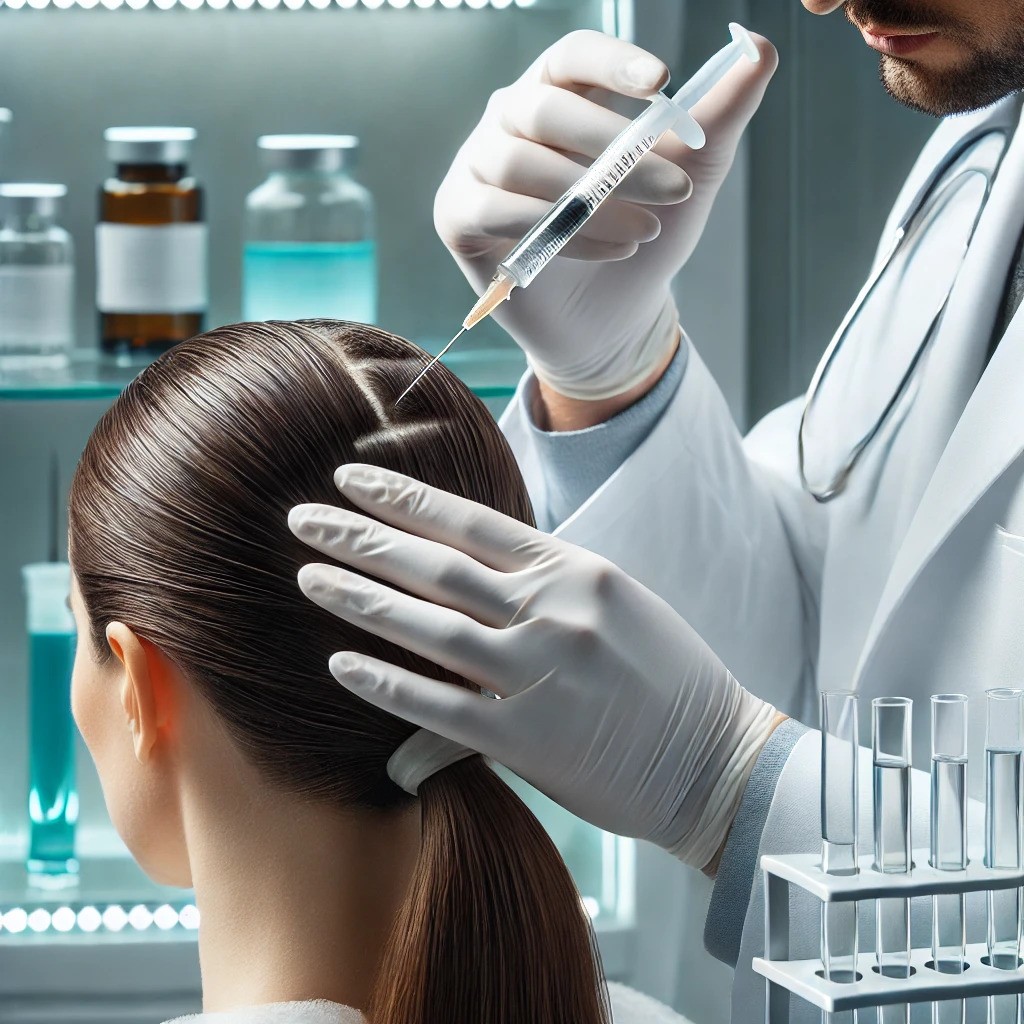Safety and Side Effects of PRP Hair Treatments: What You Need to Know

Platelet-Rich Plasma (PRP) therapy has appeared as a hopeful treatment for various forms of hair loss, including androgenetic alopecia (pattern baldness) and alopecia areata. This non-surgical procedure utilizes the patient’s own blood components to stimulate hair growth. While many individuals have reported positive outcomes, understanding the safety profile and potential side effects of PRP hair treatments is key for those considering this option. As with any medical treatment, consulting with qualified professionals and understanding the potential benefits and limitations of PRP therapy is essential before proceeding. At clinics offering PRP PRF Hair Treatment in Karachi, professionals aim to stimulate hair growth, rejuvenate follicles, and combat hair thinning efficiently by harnessing the body’s regenerative properties. It’s important to note that while PRP therapy shows promise, individual results can vary, and ongoing maintenance may be necessary to sustain improvements.
Understanding PRP Hair Treatment
PRP therapy involves drawing a small amount of the patient’s blood, processing it to concentrate the platelets, and then injecting this platelet-rich plasma into areas of the scalp experiencing hair thinning or loss. The growth factors in PRP are believed to rejuvenate hair follicles, promoting hair regrowth and increasing hair density.
Safety Profile of PRP Hair Treatments
One of the primary advantages of PRP therapy is its autologous nature; since the treatment uses the patient’s own blood, the risk of allergic reactions or immune rejection is minimal. Additionally, PRP is generally considered safe, with most patients experiencing few side effects. However, as with any medical procedure, there are potential risks and considerations to be aware of.
Potential Side Effects
While rare, some individuals may experience side effects following PRP injections. These can include:
- Pain at Injection Sites: Discomfort or tenderness in the areas where PRP is injected is common but typically resolves within a few days.
- Swelling and Redness: Mild swelling or redness of the scalp may occur post-treatment.
- Infection: Although uncommon, any injection carries a risk of infection. Ensuring the procedure is performed under sterile conditions minimizes this risk.
- Allergic Reaction: While rare, some individuals may have an allergic reaction to the local anesthetic used during the procedure.
- Hair Thinning: Some patients have reported experiencing temporary hair shedding or thinning following PRP treatment. However, clinical studies have not consistently observed this side effect, and it often resolves as the hair growth cycle normalizes.
Efficacy and Success Rates
The effectiveness of PRP therapy can vary based on several factors, including the individual’s age, the extent of hair loss, and the specific cause of alopecia. Studies suggest that PRP can improve hair density and thickness in both men and women with pattern hair loss. A 2014 study involving 11 participants with androgenic alopecia found that injecting 2 to 3 cubic centimeters of PRP into the scalp every two weeks for three months increased the average number of hair follicles from 71 to 93 units.
However, it’s important to note that while many patients experience positive outcomes, results can be variable. Some individuals may not respond to PRP therapy, and multiple sessions may be required to achieve noticeable results. Additionally, the long-term efficacy of PRP is still under investigation, and more extensive studies are needed to fully understand its potential benefits and limitations.
Factors Influencing Success Rates
Several factors can influence the success rate of PRP hair treatments:
- Age and Overall Health: Younger patients and those in good health tend to have better outcomes. Chronic health conditions may affect the effectiveness of PRP therapy.
- Severity and Duration of Hair Loss: Individuals in the early stages of hair loss often respond better to PRP treatment compared to those with advanced alopecia.
- Treatment Protocol: The number of PRP sessions, the concentration of platelets, and the technique used can all impact results. It’s essential to follow a treatment plan tailored to the individual’s needs.
Considerations Before Undergoing PRP Therapy
Before deciding on PRP treatment, consider the following:
- Consultation with a Specialist: It’s crucial to consult with a dermatologist or trichologist experienced in administering PRP therapy. They can assess your suitability for the treatment and discuss potential risks and benefits.
- Understanding Costs: PRP therapy can be costly, and since it’s often considered a cosmetic procedure, it may not be covered by insurance.
- Setting Realistic Expectations: While many patients see improvements, results can vary. It’s important to have realistic expectations and understand that multiple sessions may be necessary.
Conclusion
PRP hair treatment offers a promising option for individuals seeking to address hair loss without surgical intervention. While generally safe, it’s essential to be aware of potential side effects and factors that can influence the success rate of the treatment, such as age, hair type, and overall health. Engaging in a thorough consultation with a qualified specialist will help determine if PRP therapy is the right choice for your specific situation, ensuring that you are well-informed, prepared, and have realistic expectations for the treatment process.



